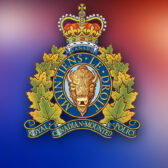UPDATED: Special air quality statement remains for West Kootenay, Boundary
Nothing new for regions in BC dealing with smoke.
Environment Canada said most regions of BC will continue to be impacted, or are likely to be impacted, by wildfire smoke over the next 24 hours.
“Smoke originating from wildfires in the United States will continue to transport over the southern half of the province,” Environment Canada said Friday.
“Impacts in the south will be greater in magnitude than the north.
“Risk for intermittent smoke in the Skeena region and central coast increases today. Air quality is expected to begin to improve for all regions over the weekend.”
The Special Air Quality Statement remains for Arrow-Slocan Lakes, Boundary, Kootenay and Kootenay Lake regions.
Poor Air Quality continues due to USA wildfires
The smoke is going to continue to impact regions of BC, including the West Kootenay/Boundary for at least the next 24 hours due to wildfire smoke Environment Canada said on its website Thursday.
Environment Canada said smoke originating from wildfires in the United States will continue to transport over the southern half of the province. Impacts in the south will be greater in magnitude than the north.
“Risk for intermittent smoke in the Skeena region and central coast increases later Thursday through Friday,” Environment Canada said.
“Air quality is expected to begin to improve for all regions over the weekend.”
Anyone having issues with being exposed to wildfire smoke should consider taking extra precautions to reduce your exposure.
Wildfire smoke is a constantly-changing mixture of particles and gasses which includes many chemicals that can harm your health. For more details, please consult www.canada.ca/en/environment-climate-change/services/air-quality-health-index/wildfire-smoke.html.
BC Wildfire Service said the Talbott Creek fire in the Slocan Valley has grown to more than 1,140 hectares.
BC Wildfire Service said helicopters were able to fly Wednesday afternoon and again this Thursday morning during periods of improved visibility.
The air attack bucketing is focused on the east flank of the fire, specifically in the McFayden and Draw Creek drainage’s.
BC Wildfire Service said there was minimal fire growth overnight with the majority of fire growth continues to be on the north flank, with some progression in the east. There are 77 firefighters on the ground with seven helicopters and seven pieces of heavy equipment battling the fire.

























